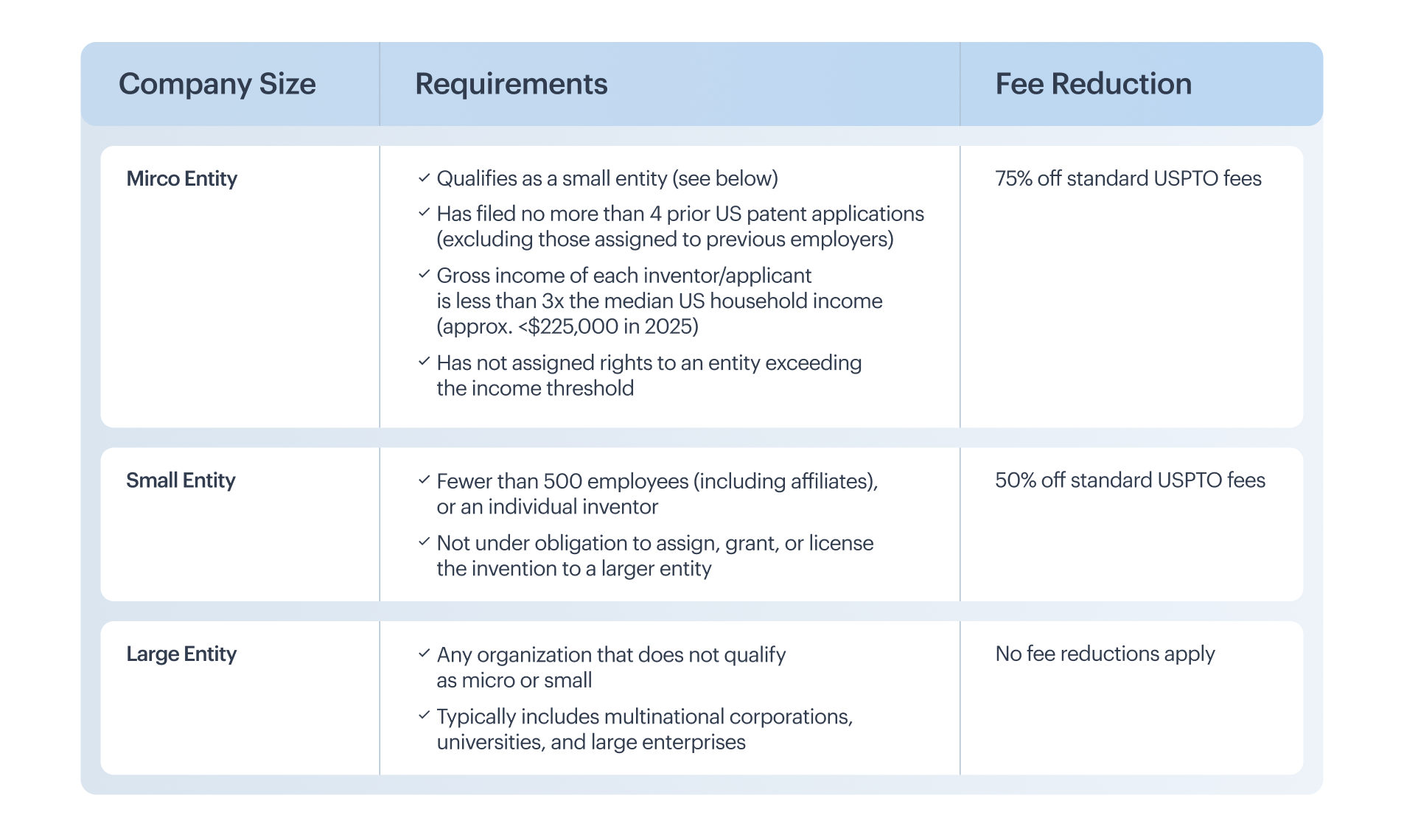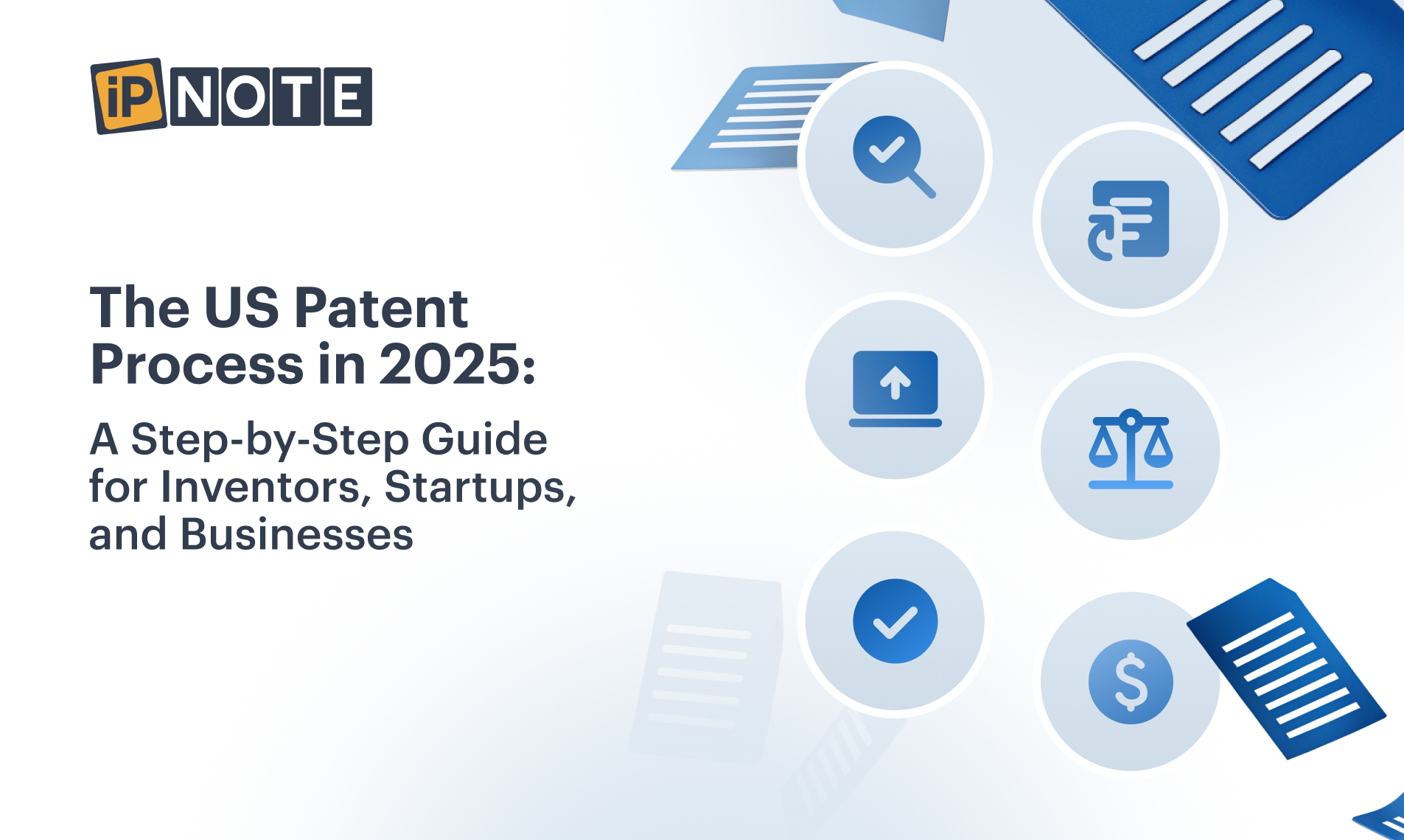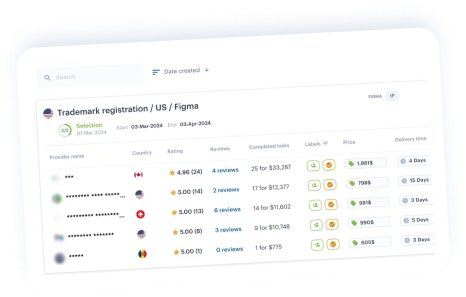Content
2. Who Can File a Patent Application in the US in 2025?
3. Step-by-Step Patent Process in 2025
5. Common Mistakes—and How to Avoid Them
6. How iPNOTE and AI Tools Help You Patent Smarter
Introduction
In 2025, obtaining a patent in the United States has become more streamlined than ever. Thanks to artificial intelligence, automation, and digital platforms, inventors can now avoid costly mistakes, speed up examinations, and save thousands of dollars. But true efficiency is only possible for those who understand the step-by-step process and use the right tools. Below, we break down the modern patenting process in the US — from search to registration — showing how to navigate it efficiently, without unnecessary bureaucracy or expenses.
Who Can File a Patent Application in the US in 2025?
In 2025, any individual or legal entity — regardless of location — can file a patent application with the USPTO. The process is open to:
- Independent inventors and creators
- Startups and small businesses
- Established companies and R&D departments
- Foreign residents and organizations
The USPTO does not require US residency or citizenship to apply. Non-residents can file directly or via a registered US patent attorney or agent. The process, required documents, and examination criteria remain the same for both US and foreign applicants.
Understanding Entity Status: Micro, Small, and Large
Types of Patents Available
When applying, choose the type of patent that best matches your invention:
- Utility Patent
Protects the functional aspects of inventions — processes, machines, compositions, or improvements. - Design Patent
Covers the unique ornamental design of a manufactured item. It must be non-functional. - Plant Patent
For new, asexually reproduced plant varieties (not tuber-propagated or naturally occurring).
Step-by-Step Patent Process in 2025
1. Pre-Patent Search: Why You Must Not Skip It
A comprehensive prior art search helps determine whether your invention is truly novel. Skipping this step can lead to wasted time and money.
What’s new in 2025: AI-powered search tools drastically reduce the time and complexity of this phase. These tools analyze vast patent databases and technical literature to identify potential conflicts, helping you assess your invention’s patentability within minutes.
Want to see how it works? Try our AI patent search tool for free
To perform a search, the iPNOTE AI tool needs:
- A detailed description of your invention
- Keywords or technical specs
Read more in our guide to AI-powered patent searches.
2. Preparing the Patent Application
This stage involves gathering all technical data, deciding which type of patent suits your invention, and drafting the application. Our AI assistant may help you choose the right type of patent that fit you.
Should you do it alone? While templates and DIY tools exist, they often miss key legal nuances. In 2025, automation can help with structure, but a licensed patent attorney or consultant remains essential for ensuring strong claims and compliance with USPTO requirements. Over-reliance on auto-fill tools and generic templates often leads to rejected or weak applications.
3. Filing with the USPTO
The entire process is now digital via the USPTO’s online portal.
Key documents include:
- Specification (detailed description of the invention)
- Claims (defining the scope of protection)
- Drawings (if applicable)
- Inventor declaration and filing forms
Timeframe:
- Drafting and preparing: 2-6 weeks (can be faster with the right tools and support)
- Filing: Immediate upon completion
Filing Types:
- Provisional Application: Reserves your priority date, valid for 12 months.
- Non-Provisional Application: Formal request for examination.
- PCT Application: For international patent protection.
- Continuation / Divisional / CIP: Variants used to expand or refine your patent strategy.
Check the detailed guide on each filing type here.
4. Patent Examination
After submission, the USPTO assigns an examiner to review your application.
They assess:
- Novelty and usefulness
- Clarity and support in claims
- Prior art references
What’s common in 2025: Examiners use AI as well, so responses to Office Actions must be precise and timely. Fortunately, modern platforms offer:
- Automated reply drafting tools
- Ready-made templates
- AI assistants to interpret examiner feedback and generate responses. iPNOTE AI tool may anayze your Office Action and share the chances of overcoming the rejection, check the details here.
5. Paying Patent Fees
Your entity classification affects how much you pay in filing and maintenance fees. Here’s how to determine your status:

All fees are paid digitally through the USPTO’s portal.
6. Grant and Patent Registration
Once approved, you’ll receive a Notice of Allowance and then a formal patent grant.
Timeline: 24–32 months on average (faster with Track One)
7. Maintaining Your Patent
Patents aren’t “set and forget”. Maintenance fees are due at regular intervals.
- Use an IP management system (IPMS) like iPNOTE to get automated reminders
- Pay online via the USPTO or authorized partners
- Don’t miss deadlines — late payments can invalidate your patent rights
What’s New in 2025?
- AI and Automation: Search, drafting, filing, and responding to Office Actions are now faster and more accurate.
- Simplified Interfaces: USPTO tools and third-party platforms now offer step-by-step guidance, reducing errors.
- Cost Efficiency: Smart tools reduce legal fees, speed up filings, and improve the success rate of approvals.
- Early-stage AI patent search
- Find the more suitable attorneys in the iPNOTE marketplace
- Avoiding rejections and refilings by working with vetted IP professionals
Common Mistakes—and How to Avoid Them
Don’t: Skipping the patent search
Do: Use AI tools for thorough, fast analysis
Don’t: Missing key deadlines
Do: Set automated reminders with an IPMS
Don’t: Waiting too long to hire a professional
Do: Consult early to ensure airtight protection and claim strategy
How iPNOTE and AI Tools Help You Patent Smarter
iPNOTE makes the 2025 patenting process even easier:
AI Search Engine: Quickly check your invention’s novelty
IP Marketplace: Connect with trusted attorneys in your region
Transparent Pricing: See full cost before you commit
IPMS: Track the process and meet the deadlines
Conclusion
The earlier you start, the easier and cheaper it is to secure your intellectual property rights. In 2025, it’s no longer about navigating the system manually — it’s about using the right tools and partners.
Try iPNOTE for free or book a free demo.






